The Notification Center was added to the Mac with the release of OS X Mountain Lion in the summer of 2012 and was meant to corral a stampede of push services that was threatening to inundate users with uncontrolled notifications popping up everywhere, or at least so it seemed.
The Notification Center unified how notifications are handled, displayed, and controlled by the user. It does such a good job of containing and controlling notifications that some users may not be aware of how they can exercise control over the service.
In this Rocket Yard guide, we’ll look at how to make use of the Mac’s Notification Center.
Accessing the Notification Center
The Notification Center resides along the far right side of your display. Normally the Notification Center is hidden, so as not to take up desktop real estate, but you can quickly access it using one of these techniques:
The Notification Center includes a menu bar icon located at the far right corner of the menu bar. Clicking or tapping the icon will cause the Notification Center panel to slide out, or slide back to its hidden state.
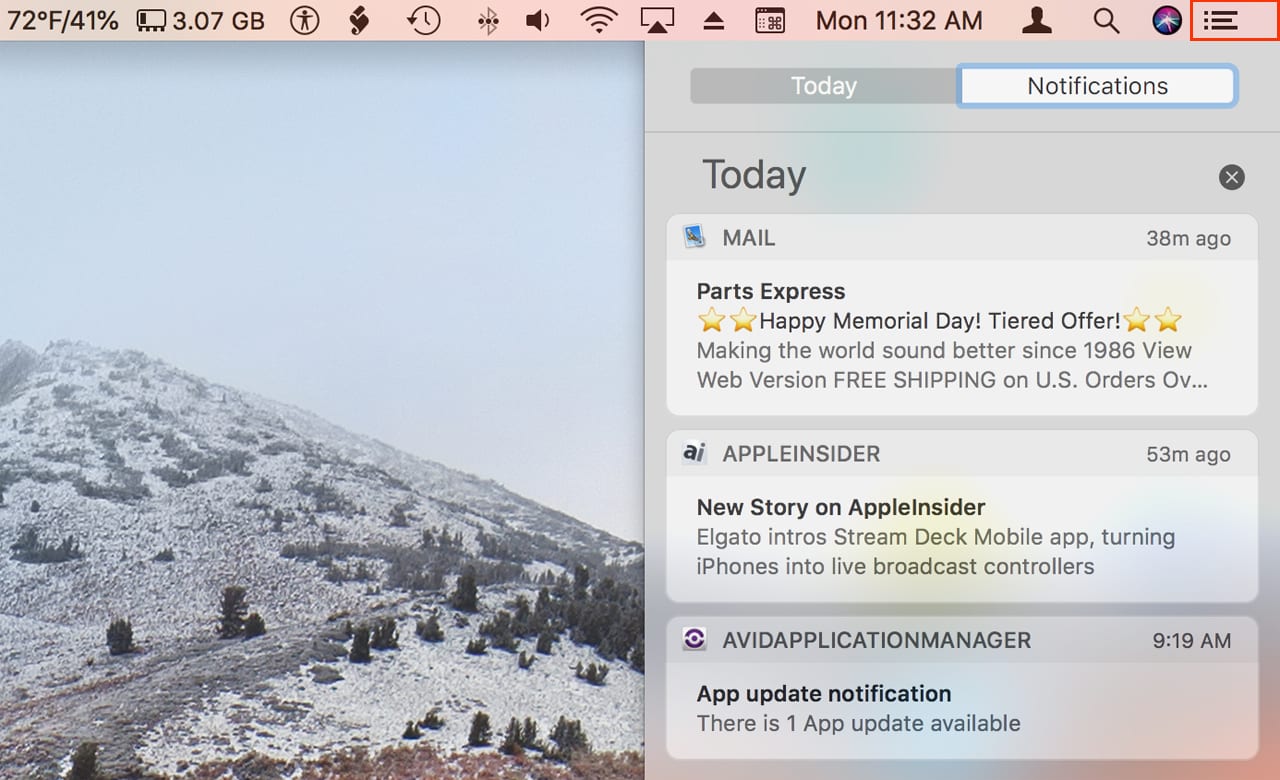
You can also use Mission Control’s Hot Corner feature to pick a corner to automatically activate the Notification Center when you move the cursor into that corner:
Launch System Preferences, and select the Mission Control preference pane.
Click or tap the Hot Corners button.
A sheet will drop down, with a dropdown menu positioned at each corner of an image of your desktop.
Pick the corner you wish to use by clicking or tapping on that corner’s dropdown menu and selecting Notification Center from the list.
Click the OK button when done.
Managing Widgets and the Today Tab
The Today tab is where active Notification Center widgets are displayed. Widgets are usually extensions that allow apps you’ve installed on your Mac to display additional information, via the Notification Center Today Tab. Some examples of widgets you’re likely to use, or at least come across, are Weather, Calendar, Social Media, and iTunes.
You can add, remove, and rearrange Today tab widgets:
Open the Notification Center using one of the methods outlined above, and select the Today tab.
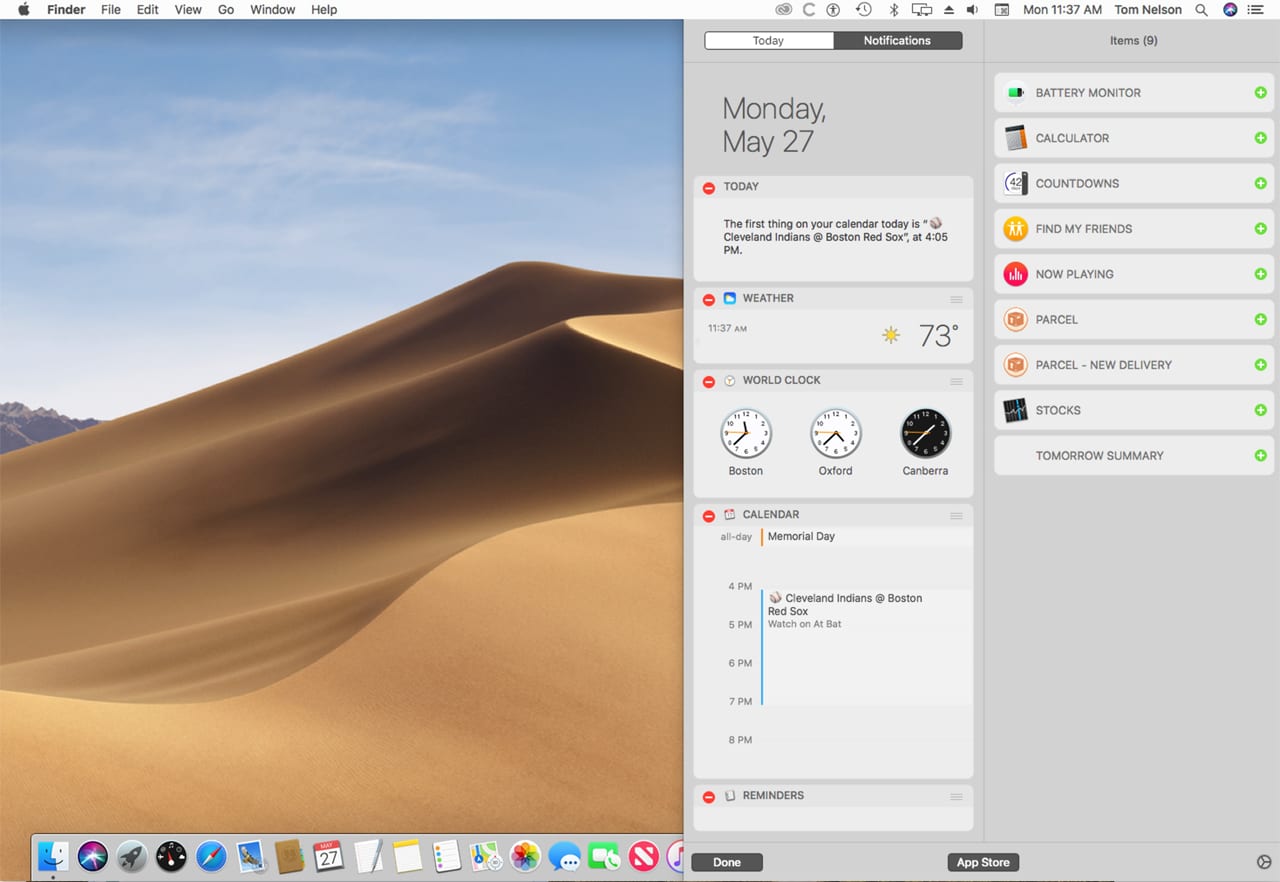
Press the Edit button at the bottom of the Today tab.
- Remove Widgets: Widgets present in the Today tab will have a minus sign within a red circle. Clicking the minus sign associated with a widget will remove it from the active Today tab and return it to the list of available widgets.
- Add Widgets: The list of available widgets is shown in the far right pane. Each widget will have a plus sign within a green circle. Clicking on the plus sign will add the widget to the active widgets displayed in the Today tab.
- Rearrange Widgets: You can rearrange active widgets by grabbing a widget by its title bar and dragging it to a new position within the active widget list.
Adding New Widgets to the Notification Center
You’ve probably noticed that many apps have Notification Center widgets that can be added to the Today pane of the Notification Center. But there are also third-party widgets, such as scientific calculators, delivery-tracking widgets, mini calendars, even an iStat Menu add-on for monitoring your Mac’s performance, all available from a specially curated section of the Mac App Store.
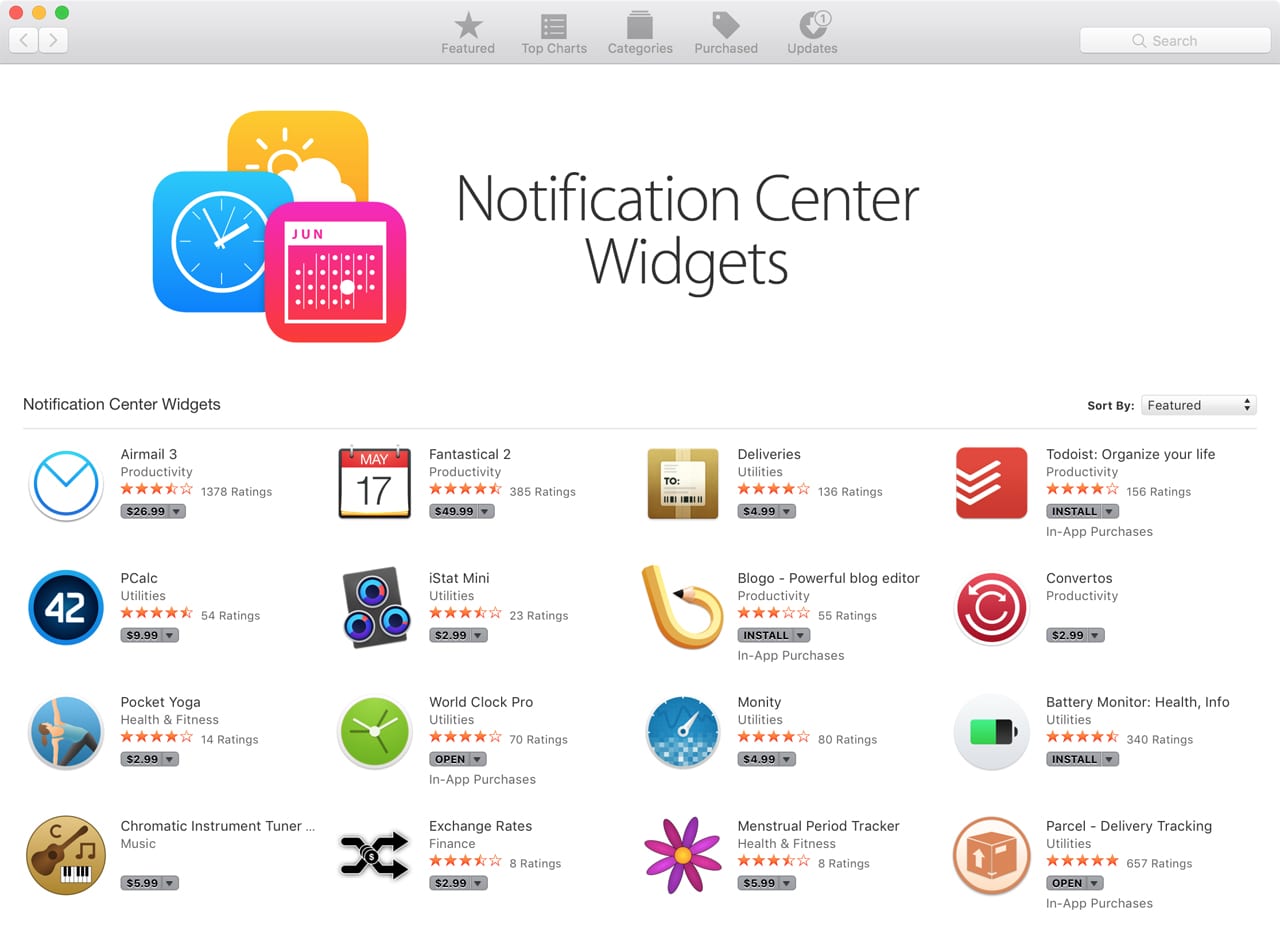
To add additional widgets, open the Notification Center and select the Today tab.
Select the Edit button at the bottom of the Today tab.
Click or tap the App Store button at the bottom.
The App Store will launch and display all Notification Center widgets that are available.
If you add a widget, it will appear in the Notification Center’s widget list, where you can add it to the Today tab (see Add Widgets, above).
Managing Notifications and Alerts
We’ve looked at how to access the Notification Center as well as work with the Today tab. That leaves the Notification tab, and how to view and customize notifications, as well as how to temporarily keep notifications from being generated.
Customize Notifications
Notifications come in three basic styles: Banner, Alerts, and None, which essentially turns notifications off for the selected service. Notification systems are set for each service that makes use of the Notification Center; this allows you to use one style for Mail notifications, a different one for Messages, and to turn notifications off for another.
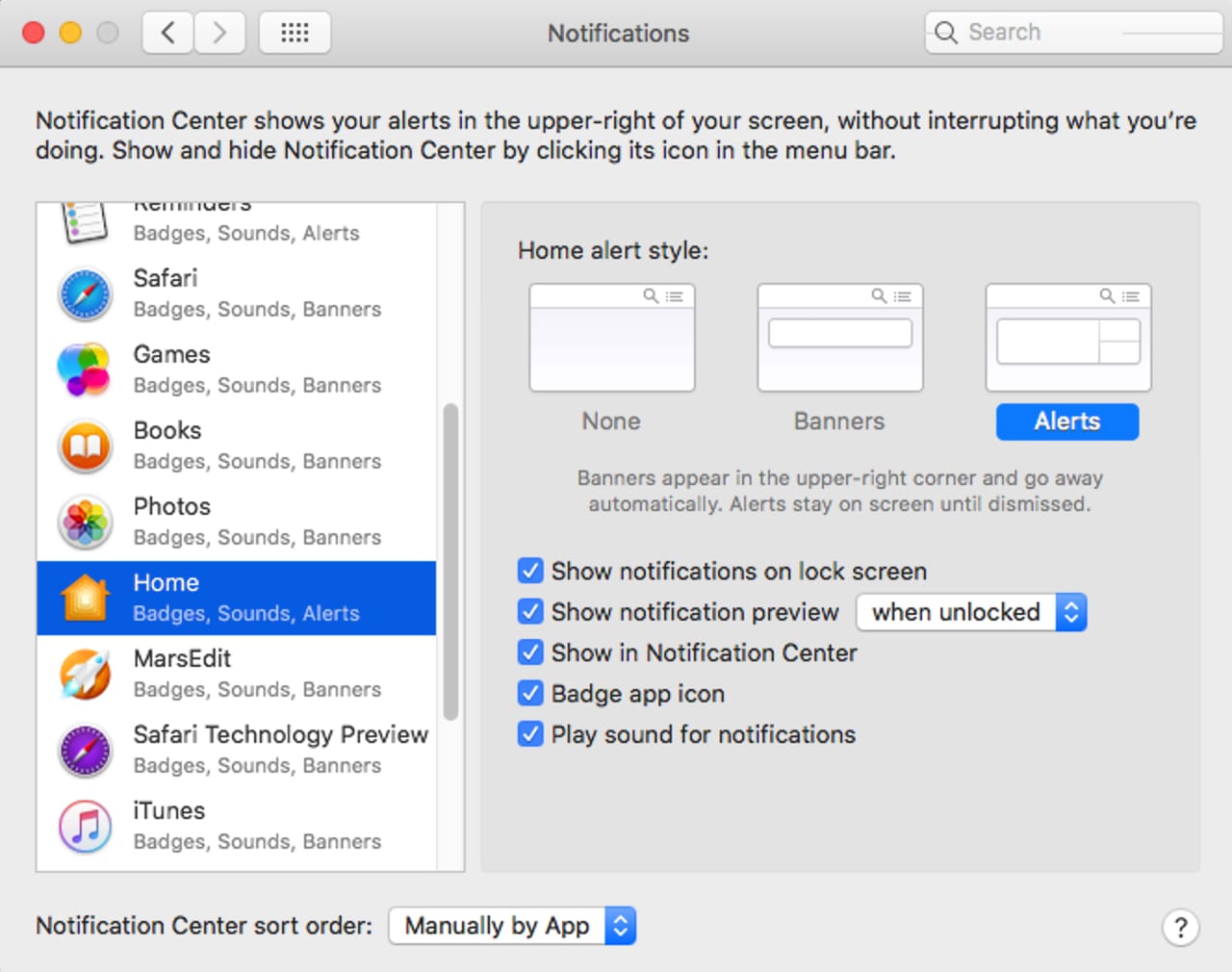
To customize how notifications are handled, follow these steps:
Launch System Preferences, from the Dock or from the Apple menu.
Select the Notifications preference pane.
The Notifications preference pane is divided into two primary areas. The left-hand sidebar lists each of the individual services that wish to use the Notification Center, and the right-hand pane displays how notifications are handled for the selected service.
To customize how notifications are handled, select the service you wish to customize from the sidebar.
Pick the notification alert style:
- None: Turns off notifications from being displayed for the selected service.
- Banners: Displays notifications as temporary banners that appear in the upper right-hand corner of your display. Banners go away after a short period of time, requiring no action from the user to dismiss them.
- Alerts: Notifications are displayed along the right-hand side of your display, and stay in place until you act on them. Alerts can contain multiple buttons to initiate an action, but the most common is a Close button to dismiss the alert.
In addition to picking a notification style, you can also set the following notification parameters:
- Show notifications on lock screen: Notifications received while your Mac was asleep will be displayed on the lock/login screen.
- Show notification preview: A notification can include a preview, usually a bit of descriptive text about the notification you received. A good example is the subject line of an email message, which may be displayed as a preview from the Mail app sending a notification. If you selected to show notifications on the lock screen (see above), there will also be a dropdown menu displayed that allows you to choose whether the previews should be shown on the lock screen. Remember, the Mac’s lock/login screen can usually be viewed by anyone who has access to your Mac.
- Show in Notification Center: Selecting this option will allow the notification to be listed in the Notification Center’s Notifications tab. Items in the Notifications tab are displayed for seven days.
- Badge app icon: When checked, the number of notifications sent by an app can be displayed in its Dock icon.
- Play sound for notifications: Allows the app to play a notification sound.
That last customization option available in the Notifications preference pane applies to all items in the Notifications tab.
Notification Center sort order: Allows you to select one of the following from the dropdown menu as the sorting method to use in the Notifications tab:
- Recents: Notifications are sorted by time, with the most recent notification displayed first.
- Recents by App: Notifications are grouped by apps, with the app with the most recent notification displayed first.
- Manually by App: Notifications are grouped by app, and the apps are sorted as they’re listed in the Notifications preference pane.
Make your selections; changes take effect right away.
Do Not Disturb
The Notification Center certainly helps keep you informed as you use your Mac, but the downside is all those notifications can be annoying when you’re busy with work or play, especially if a deadline is approaching or a high score is within reach.
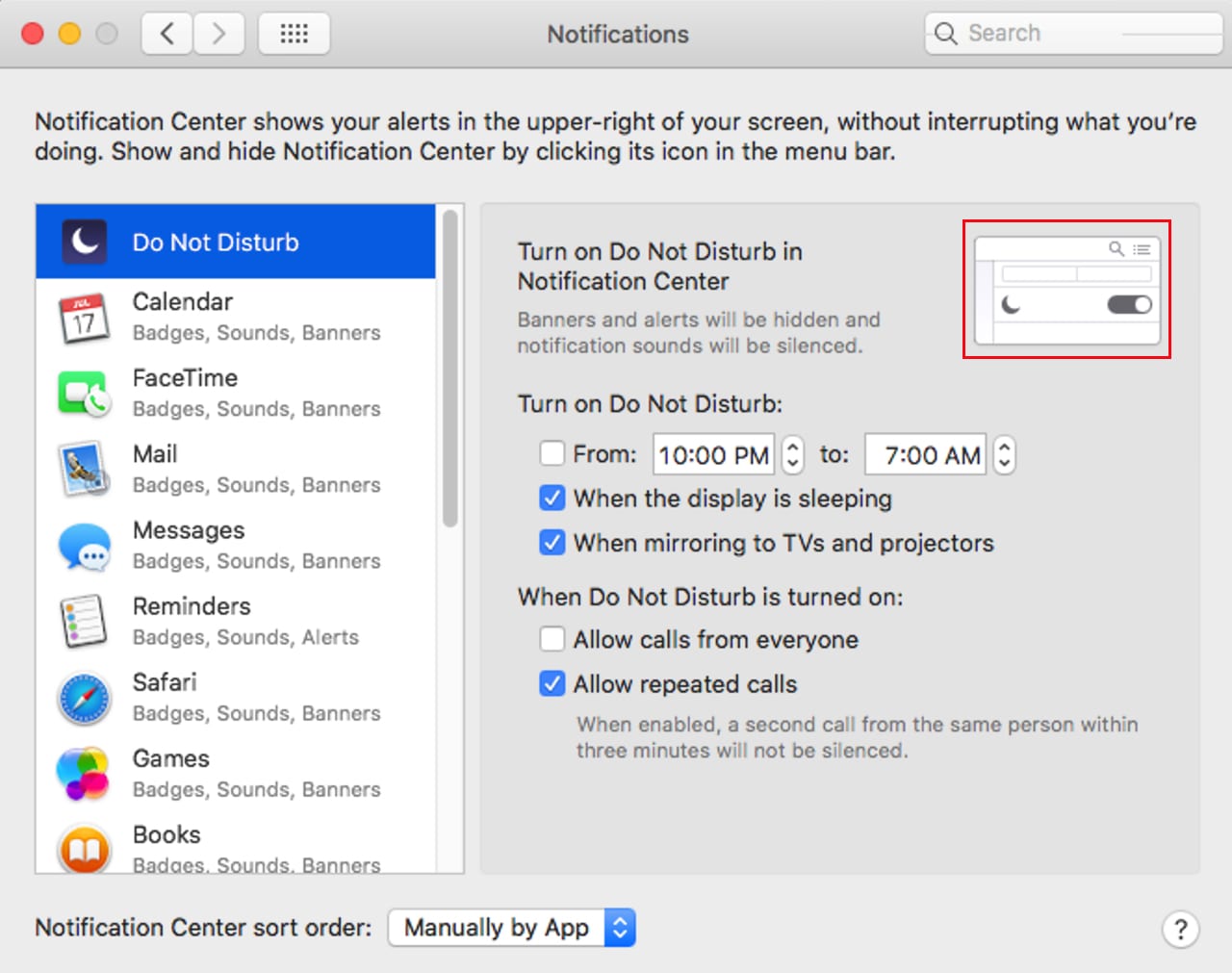
The Notification Center’s Do Not Disturb feature will hide all banners and alerts and put the kibosh on any notification sounds that may be played. There are a number of ways to enable the Do Not Disturb feature, but the best place to start is at the source, in System Preferences, where you can configure the settings:
Launch System Preferences, from the Dock or the Apple menu, and then select the Notifications preference pane.
In the preference pane’s sidebar, select the Do Not Disturb item (you may need to scroll to find it; it’s at the very top of the list). The Do Not Disturb setting will be displayed in the right-hand pane.
You can schedule when Do Not Disturb will be automatically enabled; by the time of day, during sleep, or when mirroring your display. You can also choose how calls are handled when Do Not Disturb is turned on.
To turn Do Not Disturb on or off from the preference pane, click or tap the large icon in the top right. The Notification Center will slide open with the Do Not Disturb switch showing at the top. Click or tap the switch to turn Do Not Disturb on or off.
Using the Notifications preference pane to toggle Do Not Disturb is cumbersome at best. There are a couple of quicker ways to achieve the same results:
Open the Notification Center by clicking or tapping its icon in the menu bar.
Swipe or scroll down to reveal the Do Not Disturb switch.
Click or tap the switch to toggle the Do Not Disturb state.
Our final method for toggling Do Not Disturb is the quickest of them all:
Hold down the Option key and click or tap the Notification Center icon in the menu bar. The Do Not Disturb option will toggle to the opposite state.
Tip: The Notification Center’s icon in the menu bar will appear grayed out when Do Not Disturb is active.
Removing Notifications
Notifications listed under the Notifications tab can be removed from the list:
To clear out notifications, open the Notification Center and make sure the Notifications tab is selected. Notifications can be removed by date or by app, depending on how the display sort order is set.
Click or tap the X icon at the far right side of each category (date or app group).
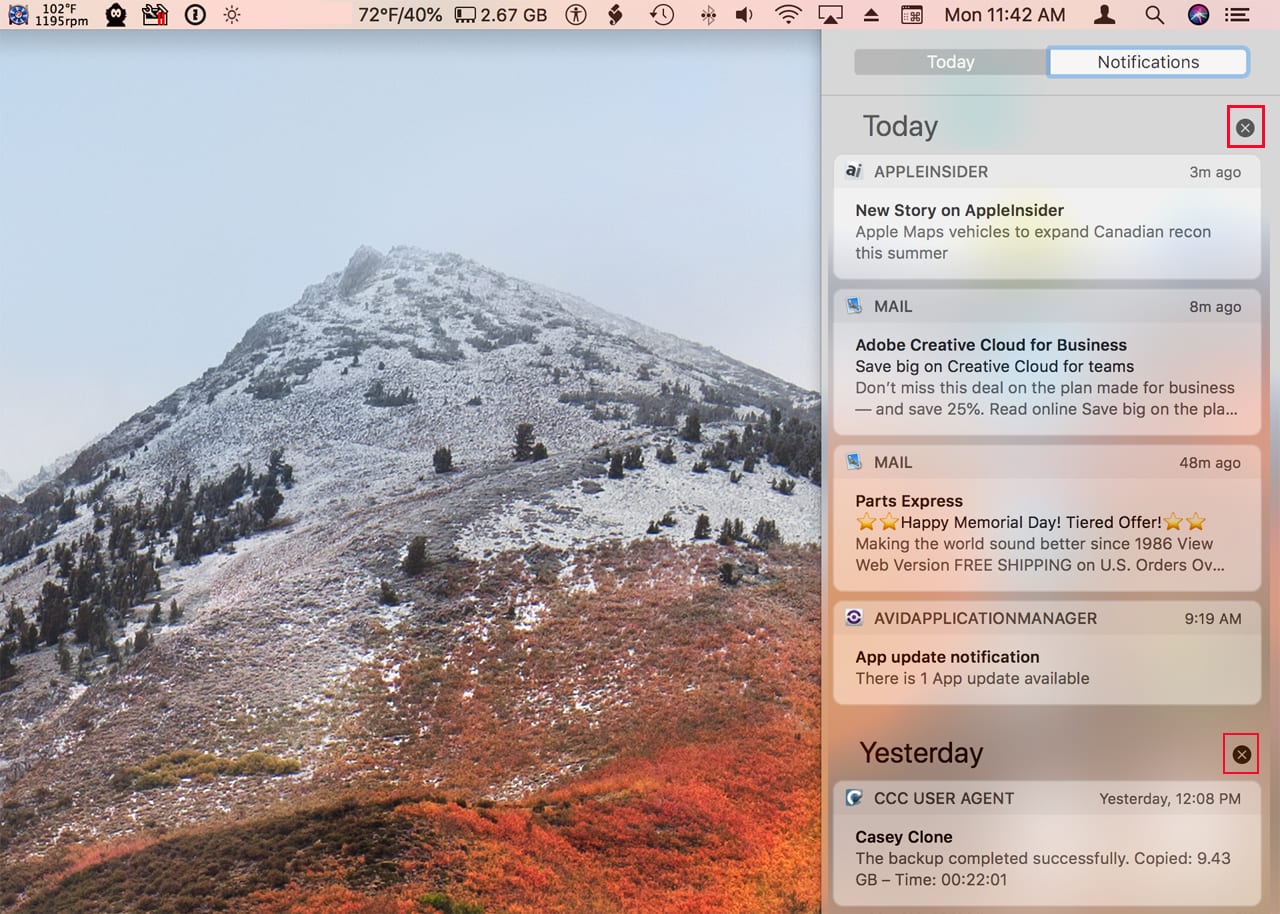
Removing Apps
Occasionally, apps that you’ve removed from your Mac will still be shown in the Notifications preference pane’s sidebar. These orphaned apps can be removed from the sidebar by highlighting the app, then selecting Delete or Backspace on your keyboard.
Warning: Deleting apps from the sidebar, which are still installed on your Mac, will not prevent those apps from sending notifications. Instead, set the alert style to None, and remove the tick mark from Show in Notification Center.
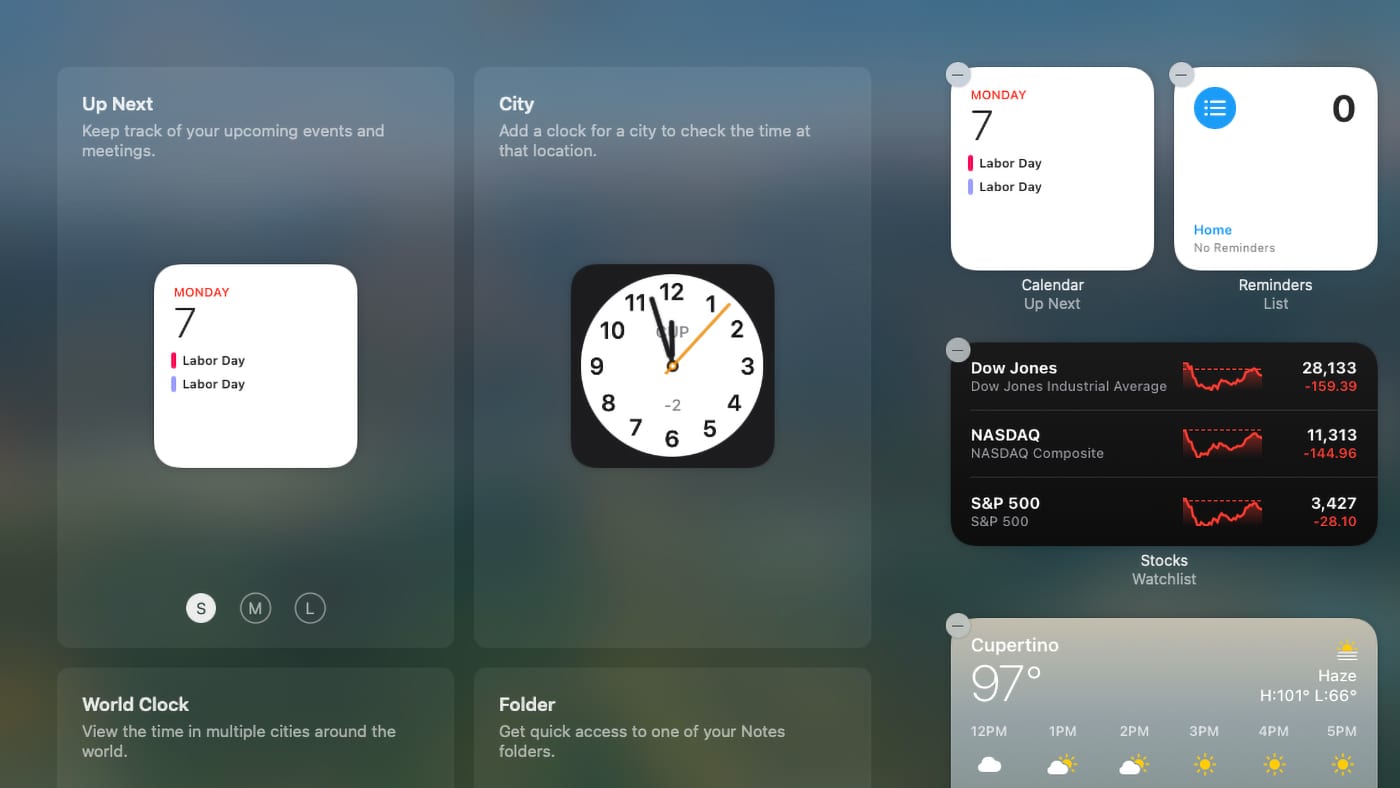

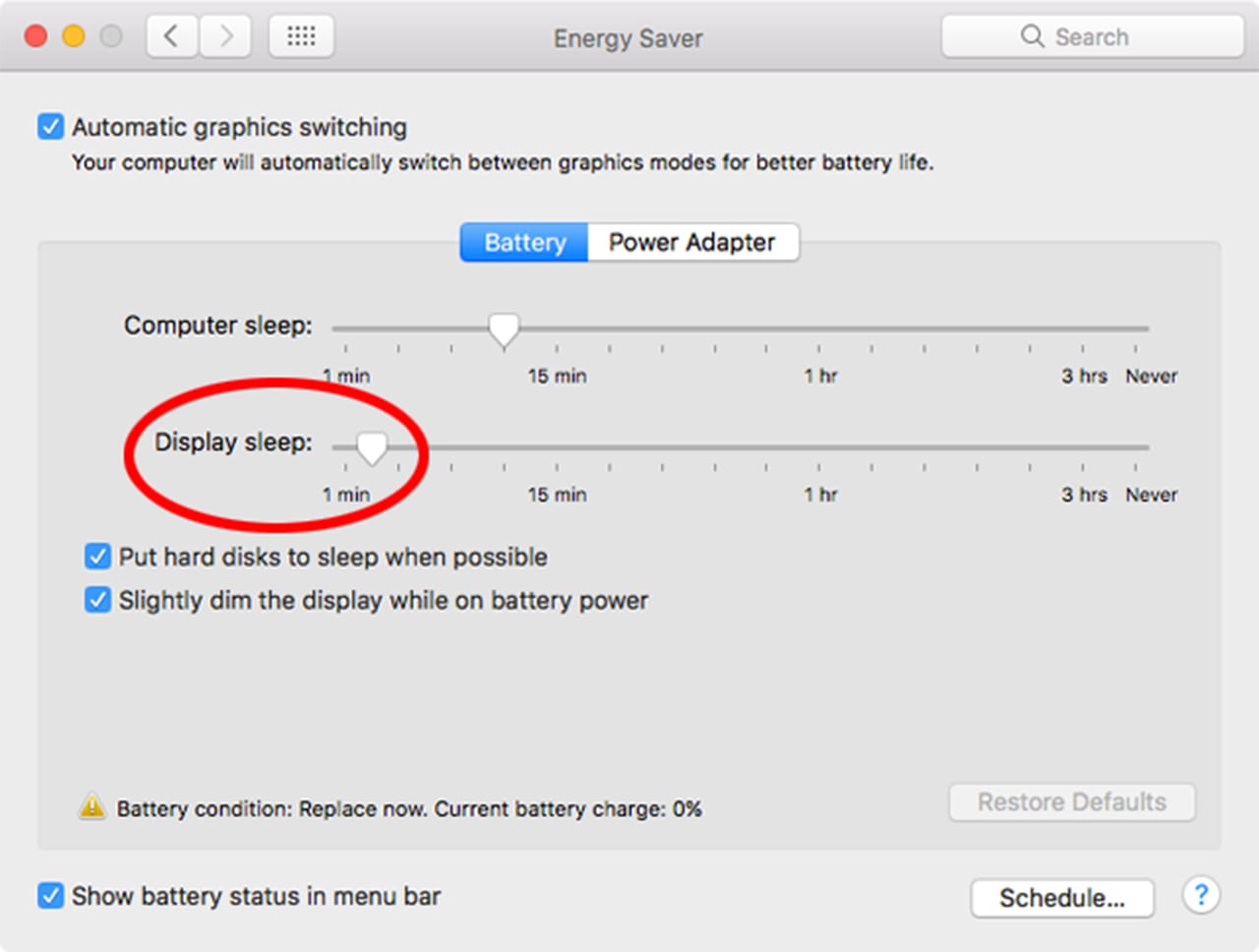






where the heck to find the notifications that come in but are not in the notifications center? they appear in the upper right corner as a banner, then disappear. But they are not ticked to allow to be shown in the notification center — so Where are they?
They had to exist somewhere to appear in a banner, where do they go? Every once in a while I’ll see one (esp. news) and then I can’t find it.